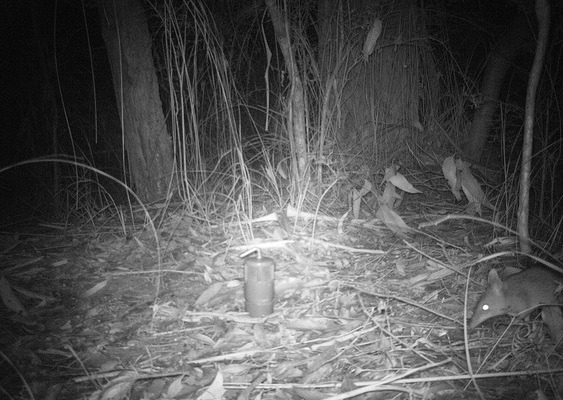
In a rare find, a long-nosed bandicoot has been spotted foraging at a small reserve in Mount Evelyn.
The nocturnal mammal was captured by one of Yarra Ranges Council’s 13 infrared cameras placed throughout the municipality by Council’s bushland and biodiversity teams as part of their Fauna Monitoring program.
The species was identified by Council staff and confirmed by scientist and bandicoot expert Peter Menkhorst from DELWP’s Arthur Rylah Institute due to its long snout, long ears, hip stripe and pale tail.
Cr Tim Heenan said the species hadn’t popped up on the radar in Mount Evelyn since 1966, according to DELWP’s Victorian Biodiversity Atlas data base.
“It’s very unusual to find these bandicoots this close to an urban environment,” Cr Tim Heenan.
“While the long-nosed bandicoot is not listed as endangered or under threat, in southern Australia the population is struggling.
“It proves to show the importance of the Olinda Creek area. It’s a really good vegetation corridor linking to the Silvan catchment which includes Silvan Reservoir.”
The species was also spotted on camera at Dixons Creek in September 2015 and the Sassafras creek corridor in January 2016.
Council Weed Management Officer Paul Smitka said the bandicoot species had visited the Mount Evelyn site five times in a two week period in April this year.
“At this stage we are not sure it is the same bandicoot returning or if the photographs are telling us there is more than one,” he said.
The cameras, which provide video and photographs, were set up to capture baseline data of what animals are in the area. The most commonly recorded species are black wallabies, wombats, brush tail and ring tail possums and bush rats.
“The main reason we do it is to find out what fauna species we have in our reserves. It allows us to manage our sites in a more efficient manner and to provide the right habitat structure for species,” Mr Smitka said.
“If we know what species are there we can have a staged approach to removing weeds.
“It’s a real bonus when we get something as unique as this and rare to the location.”
Council has been working to improve native vegetation in the area with environmental community groups such as Mt Evelyn Environment Protection and Progress Association (MEEPPA), Friends of Mt Evelyn Aqueduct and Friends of Water Race and Quinn Reserve, as well as the State Government’s Melbourne Water and the Federal Government’s Green Army environmental action plan which focused on teaching people skills about weed management.
The long -nosed bandicoot is found along the eastern coast of Australia, from Victoria to Queensland. They feed on beetles, spiders, plants, other insects and fungi.






